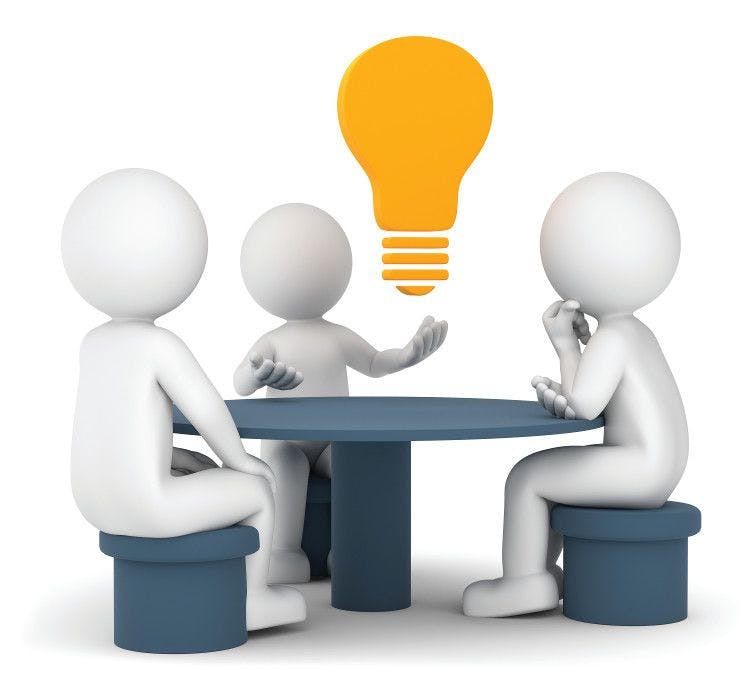Economic adulteration and the need for carbon-14 testing in the natural products industry
Carbon-14 testing to verify biobased ingredients is more important in light of the growing potential for fraud in the food and flavor industries.
Photo © Shutterstock.com/urfin

Throughout the supply chain, producers, manufacturers, and distributors are struggling to meet consumer demand for naturally sourced products. With this increasing pressure to satisfy consumers, there is the consequent potential for ingredient adulteration.
Economic adulteration and ingredient fraud are common risks within the food and flavor industries, especially as companies compete with one another on product prices.1 As concerns grow industry-wide, quality-control departments demand analytical means of ingredient authentication. Carbon-14 analysis offers a solution that differentiates between biomass-derived (biobased) ingredients and petrochemical-based ingredients.
Economically Motivated Adulteration
Economically motivated adulteration refers to the act of fraudulently and intentionally adding or substituting a substance in a product for the purpose of either adding value to a product, or decreasing the cost of production, with the overall goal of economic gain.2 This is especially common with food ingredients and flavors as unscrupulous manufacturers and distributors produce, buy, and sell adulterated products while competing with one another.
Often, products which are 100% naturally sourced (i.e. sourced from plants, animals, or microbiological materials) tend to be more expensive in comparison to their synthetic counterparts. For example, naturally derived sandalwood is priced high due to variable crop output and shortages.3 Thus, some stakeholders may be inclined to fraudulently mislabel less-expensive petrochemical-derived product ingredients as naturally sourced.4
For instance, bitter almond oil is in high demand and is widely used as a flavoring agent. Bitter almond oil consists of benzaldehyde naturally sourced from almond kernels, peach kernels, and apricot kernels. Due to the high cost and limited supply of naturally sourced bitter almond oil, the oil is highly susceptible to adulteration. In some cases, synthetic benzaldehyde from petrochemical feedstocks is fraudulently used in place of the naturally sourced ingredients.5
This is likewise the case with several other highly priced extracts and essential oils which are popular among consumers, including: adulteration of turmeric with petrochemical-derived synthetic curcumin, sandalwood oil substituted with petrochemical-derived synthetics, and bergamot oil adulterated with synthetic linalool.3,6,7
Economically motivated adulteration is prevalent among some of the most in-demand ingredients. In response, quality-control departments are in need of analytical techniques that can detect ingredient adulteration.
Natural-Source Testing Using Carbon-14 Analysis
As botanical adulteration continues to challenge the food and flavor sectors, natural product testing using carbon-14 analysis is a necessary addition to quality-control procedures.
Carbon-14 is a radioactive isotope which decays at an exponential rate after the death of a living organism. There is a known level of carbon-14 in recently living feedstocks such as plant extract, whereas there is no carbon-14 left in fossil fuel-derived material.8 Thus, to distinguish between naturally sourced and petrochemical-based ingredients, the amount of carbon-14 present in a given sample is counted.
The carbon-14 content is measured according to standardized methods such as ISO 16620-2 and ASTM D6866, which can be used specifically for products such as flavors, fragrances, supplements, food ingredients, and beverages.9,10 Both ISO 16620-2 and ASTM D6866 determine the biobased content of solid, liquid, or gas samples using carbon-14 analysis. An analytical report under ISO 16620-2 or ASTM D6866 will represent the percentage of the sample that is sourced from biobased material. Materials completely sourced from biomass will be 100% biobased, while, on the other hand, a material only sourced from petrochemical-derived synthetic constituents will be reported as 0% biobased. Furthermore, if a product is a mixture of both plant extracts and fossil fuel content, then the result reported will be a percentage between 0% and 100% in proportion to the amount of each component in the product.8
Conclusion
Due to economic factors, some stakeholders within the food and flavor sectors are tempted to replace biomass-based ingredients petrochemical synthetic adulterants. Because of this, there are widespread instances of adulteration, several of which are left undetected. In order to detect cases of adulteration, carbon-14 analysis serves as an effective and accurate technique to distinguish between petrochemical-derived ingredients and naturally sourced ingredients.
Haley Gershon is a marketing specialist for Beta Analytic (Miami; www.betalabservices.com). ISO 17025-accredited Beta Analytic provides biobased content measurements to top commercial organizations, government agencies, scientists, and engineers. The company says it has been the world leader in carbon-14 analyses since 1979.
References:
- Van der Veen B. “Botanical adulteration remains an industry challenge.” Vitafoods Insights. October 9, 2018. Accessed at: https://www.vitafoodsinsights.com/botanicals/botanical-adulteration-remains-industry-challenge
- U.S. Food and Drug Administration. “Addressing Challenges of Economically Motivated Adulteration.” Presentation by Randall Lutter, PhD, Deputy Commissioner of Policy, FDA. May 2009. Accessed at https://www.google.com/url?sa=t&rct=j&q=&esrc=s&source=web&cd=1&ved=2ahUKEwil1ZTiiPniAhUqllQKHferCE8QFjAAegQIBRAC&url=https%3A%2F%2Fwww.fda.gov%2Fmedia%2F76846%2Fdownload&usg=AOvVaw2nPNQLRQPJqSU7XclxC1q7
- Boren KE et al. “Detecting essential oil adulteration.” Journal of Environmental Analytical Chemistry. Published online February 16, 2015.
- Johnson R. “Food Fraud and ‘Economically Motivated Adulteration’ of Food and Food Ingredients.” Report for Congressional Research Service. January 10, 2014. Accessed at: https://fas.org/sgp/crs/misc/R43358.pdf
- Shaath NA et al. “Natural Oil of Bitter Almond.” Perfumer & Flavorist, vol. 16 (November/December 1991). Accessed at: https://media.allured.com/documents/9157.pdf
- Prince J. “Turmeric Adulteration, Test Methods Examined in New Botanical Adulterants Bulletin.” Nutritional Outlook. Published online June 27, 2018. Accessed at: http://www.nutritionaloutlook.com/herbs-botanicals/turmeric-adulteration-test-methods-examined-new-botanical-adulterants-bulletin
- Bonaccorsi I et al. “Adulteration of bergamot oil.” Citrus bergamia. October 2013. Accessed at: https://www.researchgate.net/publication/258119288_Adulteration_of_Bergamot_Oil
- Beta Analytic website. “Understanding Carbon-14 Analysis.” Accessed at: https://www.betalabservices.com/biobased/carbon14-dating.html
- International Organization for Standardization. ISO 16620-2:2015, Plastics -- Biobased content -- Part 2: Determination of biobased carbon content. Published April 2015. Accessed at: https://www.iso.org/standard/63767.html
- ASTM International. ASTM D6866 - 18, Standard Test Methods for Determining the Biobased Content of Solid, Liquid, and Gaseous Samples Using Radiocarbon Analysis. (2018). Accessed at: https://www.astm.org/Standards/D6866.htm


.png&w=3840&q=75)

.png&w=3840&q=75)



.png&w=3840&q=75)



.png&w=3840&q=75)
























